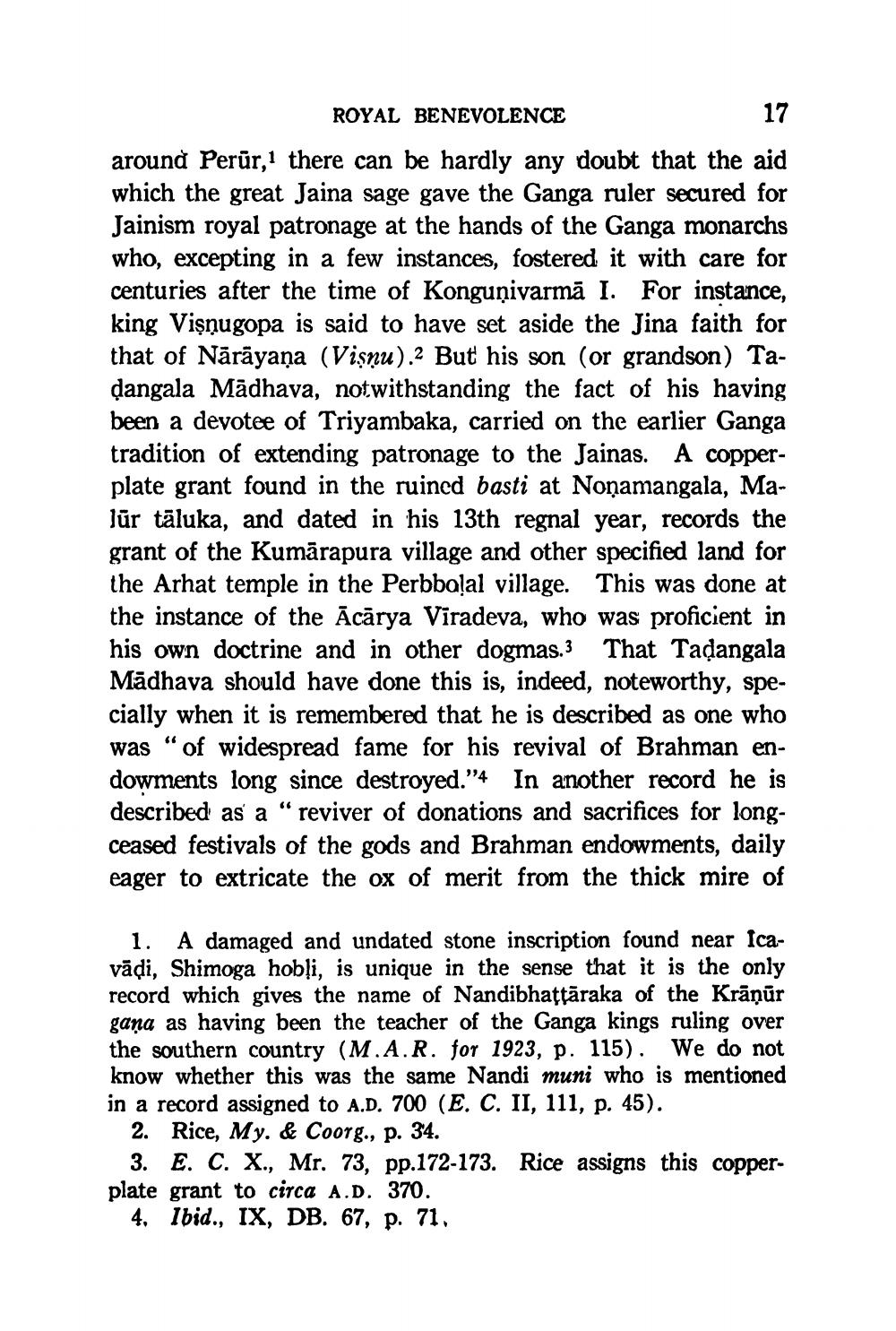________________
17
ROYAL BENEVOLENCE around Perür, there can be hardly any doubt that the aid which the great Jaina sage gave the Ganga ruler secured for Jainism royal patronage at the hands of the Ganga monarchs who, excepting in a few instances, fostered it with care for centuries after the time of Kongunivarmā I. For instance, king Vişnugopa is said to have set aside the Jina faith for that of Nārāyaṇa (Vişnu). But his son (or grandson) Tadangala Madhava, notwithstanding the fact of his having been a devotee of Triyambaka, carried on the earlier Ganga tradition of extending patronage to the Jainas. A copperplate grant found in the ruined basti at Noņamangala, MaJūr tāluka, and dated in his 13th regnal year, records the grant of the Kumārapura village and other specified land for the Arhat temple in the Perbbaļal village. This was done at the instance of the Ācārya Viradeva, who was proficient in his own doctrine and in other dogmas.3 That Tadangala Mādhava should have done this is, indeed, noteworthy, specially when it is remembered that he is described as one who was "of widespread fame for his revival of Brahman endowments long since destroyed.” In another record he is described as a "reviver of donations and sacrifices for longceased festivals of the gods and Brahman endowments, daily eager to extricate the ox of merit from the thick mire of
1. A damaged and undated stone inscription found near Icavādi, Shimoga hobli, is unique in the sense that it is the only record which gives the name of Nandibhattāraka of the Krānür gana as having been the teacher of the Ganga kings ruling over the southern country (M.A.R. for 1923, p. 115). We do not know whether this was the same Nandi muni who is mentioned in a record assigned to A.D. 700 (E. C. II, 111, p. 45).
2. Rice, My. & Coorg., p. 34.
3. E. C. X., Mr. 73, pp.172-173. Rice assigns this copperplate grant to circa A.D. 370.
4. Ibid., IX, DB. 67, p. 71.




